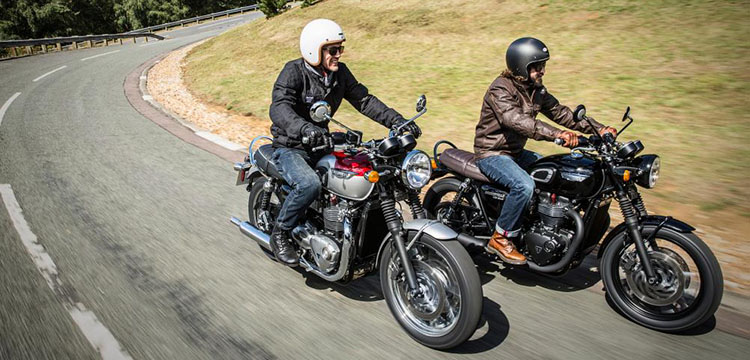
Get your bike handling again…
You don’t have to put up with a poorly-handling motorcycle due to sacked-out suspension – there are options which don’t have to run into thousands of dollars yet can bring back the control and feel the bike had when it was new.
They aren’t heavily promoted and won’t be in stock at your local bike shop, but there’s a really good chance there’s a reasonably priced replacement rear shock (or pair if your bike takes two) and your forks can be serviced.
Repair
There are numerous suspension service shops dotted around the country. Many of them will open up the standard shock which came with your bike, clean it out and replace the oil – which will make a huge difference to the performance of the shock.
In theory the spring could be replaced during this process, but I’d only recommend considering this if a new shock can’t be sourced – the difference in cost of a repair and new spring versus a new shock isn’t likely to be much, and the new shock is going to come with a warranty
and little or no labour costs (they are pretty easy to fit).
Forks come in a variety of flavours: damper-rod, cartridge and upside-down. Whatever the type, they should be pulled apart, cleaned and the oil replaced regularly – at least every few years, because the oil goes off, turning sludgy and blocking up the damping system.
Unless you’re planning to work on your own forks regularly, don’t try to service them yourself. To pull a set of forks apart requires tools you won’t have and attention to detail most home mechanics don’t have. Without the special tools you’re likely to damage parts trying to remove circlips and seals, inaccurately refill the forks and spend lots and lots more time trying to get it right than a mechanic will.
It’s difficult to say how much a shock service will cost – it can vary widely – but a fork service should cost around $200 plus parts (oil, seals and springs if required) provided you can pull the forks out of the bike yourself.
Forks
Most motorcycles use telescopic forks for the front suspension: the big exception is the BMW Telelever system, which uses a rear-shock style spring/damper unit behind the steering head – its forks contain neither springs nor damping.
For the rest of us, we’ve got spring/hydraulic telescopic forks, which basically come in three styles for most road bikes: damper rod, cartridge and USD (Upside down).
There are other designs, like separate function forks, Balance Free Forks and semi-active electronic forks, but they are going way beyond the scope of this article.
Conventional forks have the fat part at the bottom, called the slider. The upper tubes, which are usually chrome-plated, are the stanchions. With upside down (USD) forks, that’s reversed – the stanchions slide into the upper tubes.
Whatever the type, inside the forks are springs, oil and some way for the oil flow to be controlled, which provides damping.
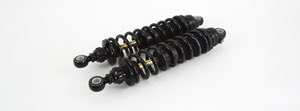
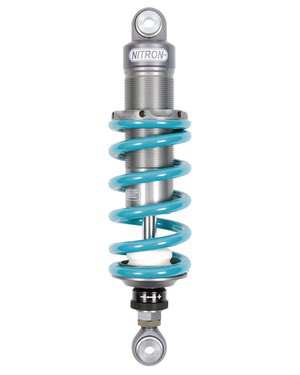
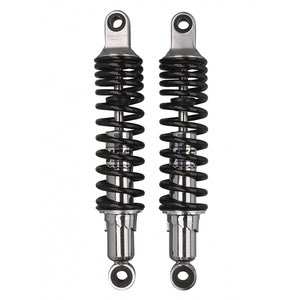
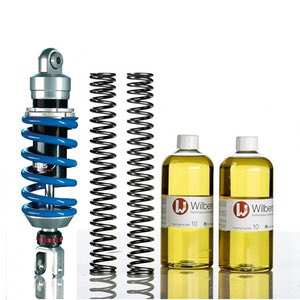
Damper Rod Forks
The most basic commonly available fork uses a damper rod, which is a metal tube with holes in it at the bottom of the fork. When compressed, oil flows through the holes, providing damping. The springs sit on top of the damper rods.
The problem here is over small bumps the oil often flows freely, providing little damping, whereas hit a decent pothole and it’ll feel hard as a rock. What’s happening is when the fork is moving up and down slowly there’s not enough damping, but when hit hard you can get hydraulic lock – the increase in pressure is at the square of the velocity on the fork’s movement (not the bike’s speed).
While not all damper rod forks are bad, they are rarely good. There are a variety of cartridge-fork upgrade kits available for selected bikes from Nitron, Wilbers and Öhlins.
Racetech and YSS (and probably others) manufacture fork valves to offer cartridge-like performance from damper-rod forks, and are a really popular upgrade: alternatively replacing and varying the springs or fork oil weight can help improve handling.
Cartridge Forks
Cartridge forks usually use holes as well as shims for damping which bend out of the way to let oil flow through – when a big hit is experienced more (or thicker) shims will bend, allowing oil to flow through quicker, reducing damping and allowing the forks to compress.
Cartridge forks are far more likely to offer a range of adjustment via external clickers than damper-rod forks, by restricting or allowing more oil to flow through the damping system.

Rear shocks
Rear shocks actually work the same ways as forks: the spring absorbs the weight and forces, the damping mechanism slows the rate of compression and rebound.
Most modern shocks have a spring wrapped around a piston and cylinder unit which provides the damping: inside the cylinder is oil and gas, while hanging off the shock might be a piggyback reservoir or a hydraulic hose to a remote reservoir, essentially to increase the oil capacity of the shock.
Basic cheap shocks have the piston push the oil through holes in the damper mechanism on compression and a different set of holes when the spring rebounds. Performance suffers when the oil heats up and there’s often only spring preload available for adjustment.
Emulsion shocks have nitrogen above the oil and are pressurised, deliberately designed to ‘foam up”, which provides consistent performance.
While basic and emulsion shocks can be rebuilt, if you’re going to keep the bike, replace the shocks with new units if they aren’t working well.
The highest performance shocks use a De Carbon design: the oil is kept separate from the oil with a floating piston or bladder. Externally De Carbon designs can look conventional or may feature remote reservoirs or piggyback designs. These extra reservoirs are there to increase the oil capacity of the shock, because its performance degrades with heat – extra oil makes this less likely.
Many standard De Carbon design shocks can be rebuilt, even ‘non-rebuildable’ OEM units; however, biting the bullet and buying a new shock (or shocks if your bike takes two) will usually result in better performance, more adjustability, a spring set for your weight and relatively easy maintenance.
Check out Nitron, Öhlins, Wilbers, Ikon and YSS.





